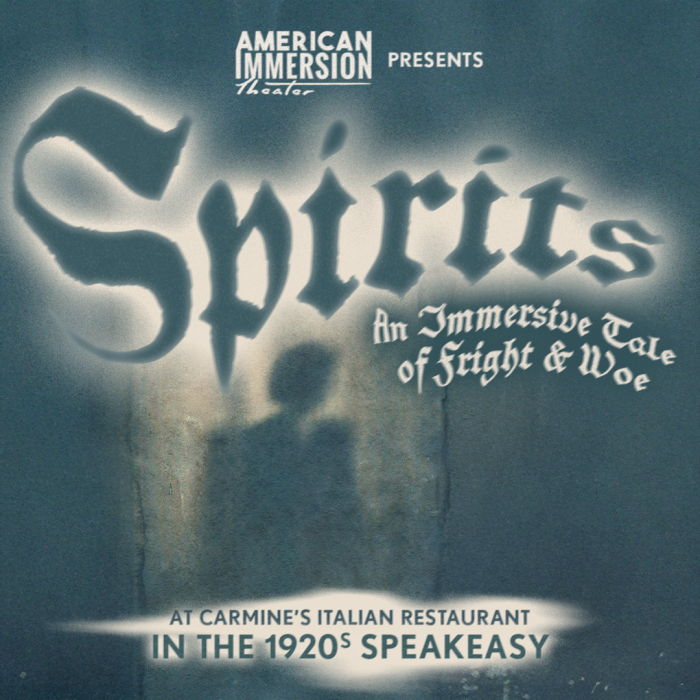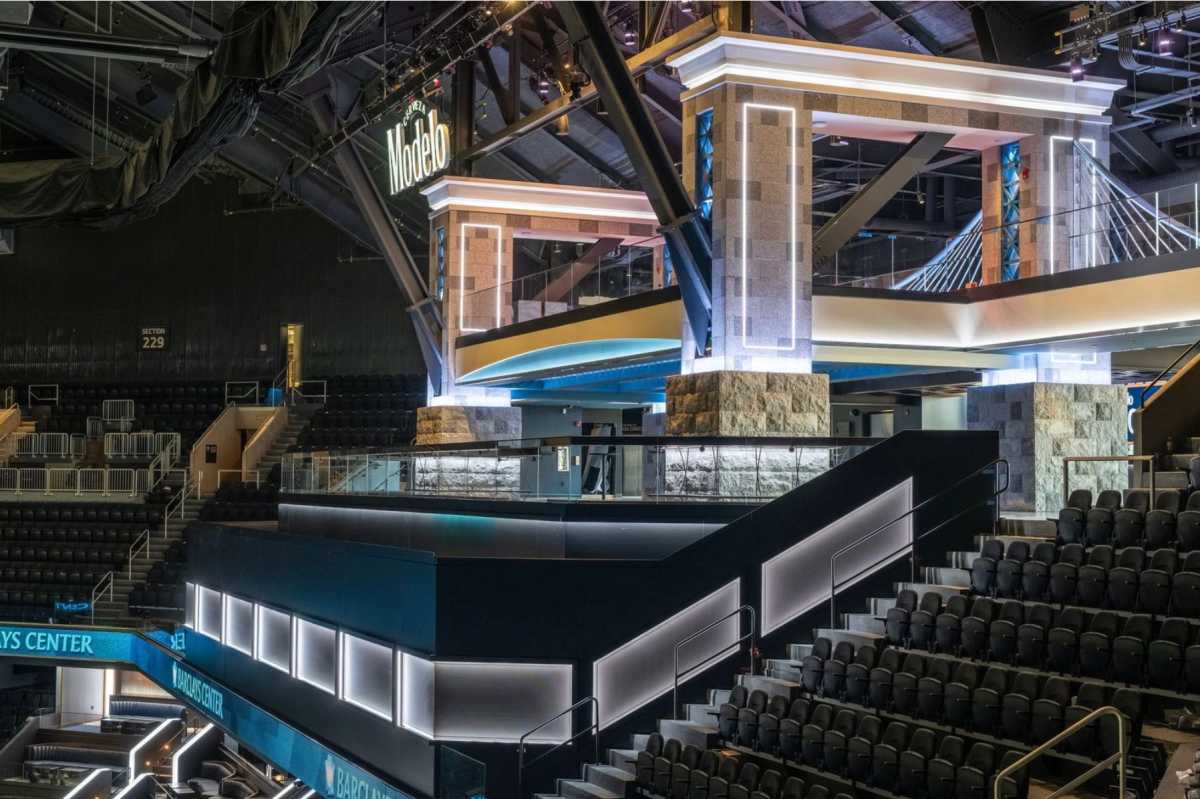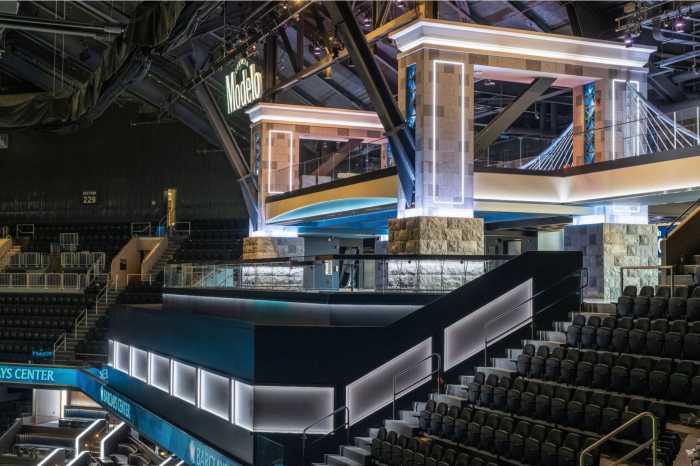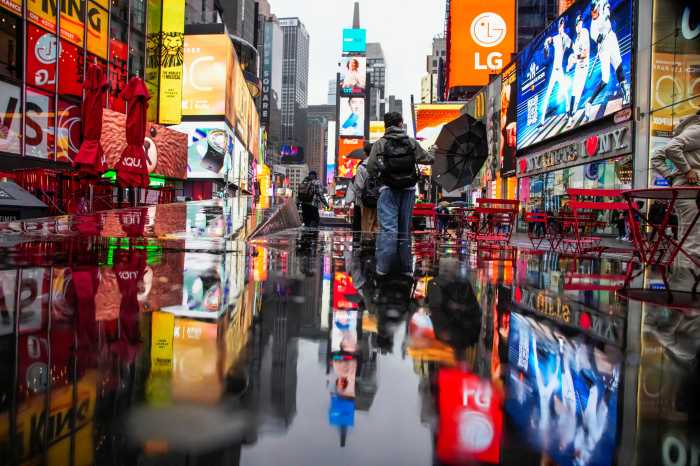By James S. Woodman
When Michael Chesko made his first arrival in New York last week, he had four buildings that he needed to touch. At his home in Arizona, he had spent countless solitary hours looking at them in blueprints, old photographs, digital reproductions, and satellite images—it was now time to face them in reality. To Chesko, these buildings — 40 Wall St., the Chrysler Building, the American International Building, and the Empire State Building — represent not only the personality of what he considers to be the greatest nation in history, but even more, humankind’s highest achievements. He had also replicated the towers in his latest project, balsawood reproductions of Lower and Midtown Manhattan, whose completion he regards as the “culmination of a spiritual journey”.
Chesko, 49, and his models made their first appearance in New York last Thursday at the New York Skyscraper Museum in Battery Park City. Though his Downtown model is the first on display, his larger Midtown model has few, if any, parallels in the business of miniature wooden cities. The model adheres to Chesko’s preferred scale, in which three-eighths of an inch equals 100 feet. In hand-carving each of the model’s estimated 382 city blocks, Chesko used Xacto blades and fingernail files to hone each detail to a degree of precision that he unabashedly applauds.
“If you were to enlarge this model to life size,” Chesko said, “the largest discrepancies wouldn’t be more than five or six feet.”
The 35-by-29-inch Midtown model is embedded with six months of relentless 80-hour-a-week work, each step of which performed exclusively by Chesko. “I started working at seven o’clock each morning, and, with a break around noon for household chores, would finish working around midnight,” Chesko said. “On a good day, I would get to maybe four city blocks.”
“I think it is extraordinary, I don’t know of anything else like it,” said Carol Willis, curator of the Skyscraper Museum. “It is not often that someone trains that sort of obsessive attention on something like that. He really did each block accurately.”
Though Chesko has modeled leisurely for years his Midtown model was the first of his projects done with even a vague deadline in mind. The agreement with the Skyscraper Museum to complete the Midtown model was only verbal, but Chesko said that this gave him impetus to tackle the task head on. “I never intended to finish Midtown as a hobby,” Chesko said. “I needed some other motivation — to be paid or some other reason; the Skyscraper Museum gave me that reason.”
Chesko’s Downtown model, on the other hand, was solely a product of his leisure time. In the 1990s, Chesko modeled several of his favorite skyscrapers taken from different cities around the country. As he added to the collection, its contingent of those belonging to Downtown Manhattan grew. Before long, he made a to-scale particleboard layout of Lower Manhattan on which he placed his completed Downtown skyscrapers.
In 2004 he decided to complete the model. “It was like, all of a sudden I had all of these buildings on there and I decided that it was time to really go for it,” Chesko said. He finished the Downtown model in early 2005.
Even though he completed it after 9/11, the World Trade Center towers loom over the Downtown model, which is fashioned after a 2000 snapshot of the area. Chesko says that although there was “definitely a memorial aspect to the decision” to keep the towers, he kept them mostly because he was interested in seeing what they looked like in the model’s context. This, he hopes, will give New Yorkers what is now a rare opportunity to see the Twin Towers in a three-dimensional relationship with their surrounding city.
Chesko describes himself as an eccentric mix of engineer, model maker unofficial cartographer, and, most of all, artist. As a child he would spend hours on end creating maps of fictitious landscapes. “I wouldn’t make maps of Arizona but maps of a place like Arizona,” Chesko said. “Then I started modeling cities.”
“It slowly evolved and grew bigger and bigger. I’d get blocks, nuts, bolts, and bricks and built cities that filled rooms. That is how I would play. To some extent, a lot kids do that, but I did it on the largest scale; no body was laying out the streets that I was,” Chesko said.
In the 1980s, when he was working as a software engineer for Motorola, Chesko began working on a sprawling imaginary city that he named Britannica, after the encyclopedia. It was around this time that Chesko discovered that balsawood was the superior medium for working his models’ scale and level of detail.
A decade later, he was tiring of modeling fantasy cities and began modeling existing skyscrapers as they were and in proportion to their neighbors. This provided a new challenge as Chesko was now forced to rigidly adhere to the proportions, geography and architecture of a given building or city.
Though the Empire State Building is Chesko’s favorite skyscraper, he says that the American International Building holds a special importance to him. Located at 70 Pine St. the building was completed in 1932. After 9/11 it regained its status as Lower Manhattan’s tallest building due to its gothic-like spire.
“This building went up very quietly as the third tallest building in the world while the Empire State Building was taking all of the fanfare. I love the way it rises. It has a slender gracefulness to it. And it just doesn’t get a lot of recognition,” Chesko said. Visiting and touching the Downtown building, Chesko added, “was a pilgrimage.”
Chesko sees skyscrapers almost as living beings which continue to mold the people who frequent the buildings’ neighborhoods. He believes tall, beautiful buildings have defined the American spirit for a century.
“I think it’s deep in our psyche,” he said of skyscrapers. “They are natural. There is something about reaching toward heaven, some divine or spiritual engine that drives us to the climax, pinnacle, the apex of existence.”
Chesko designed his own memorial towers for the World Trade Center. He said his structure, which he called Spire America, would have been “the greatest building ever, to stand the test of time.”
Chesko had never been to New York City before last week. He and his wife were in Greenwich Village last week admiring the terracotta facade of an otherwise unassuming building.
“It was absolutely amazing, and quite obvious that no one stops to appreciate it,” he said. “Then I said to my wife “‘why don’t these people ever look up? They just don’t know what they are walking under.’”
Just after Chesko made the pronouncement, a restaurant waiter overheard him, stepped out into the street, and admired his restaurant’s building, presumably for the first time.
Michael Chesko’s Downtown model is on display in the Skyscraper Museum at 39 Battery Place, which is open noon- 6 p.m. Wed. – Sun. His Midtown model will go on display sometime in the coming months. Skyscraper.org 212-968-1961.
































